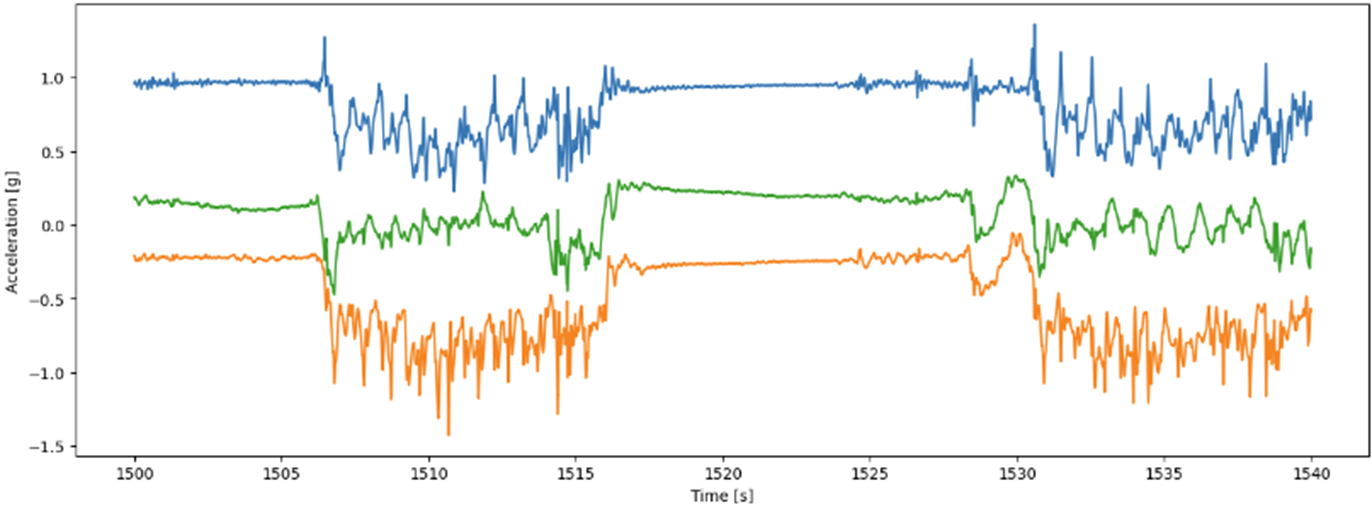Parkinson’s disease manifests in various ways throughout the course of the disease, but perhaps one of the most discernible and impactful manifestations is the impairment of walking. Currently, motor control and gait quality of individuals with Parkinson’s disease are assessed during in-clinic assessments, which provide a mere snapshot of disease status, and are prone to various forms of bias. The adoption and validation of wearable sensors is expected to resolve the limitations of in-clinic assessments by providing objective, continuous measurements of gait in daily life. This can be used to provide decision support to healthcare providers, and to provide more sensitive outcome measures for clinical trials investigating neuroprotective treatments. A key challenge is to develop models with the ability to derive meaningful insights from the heterogeneous real-life data, in particular insights related to disease progression.
To tackle this challenge, we make use of the Personalized Parkinson Project (PPP), a longitudinal study consisting of 520 individuals with Parkinson’s disease equipped with a wrist-worn sensor for up to 3 years [1]. The availability of continuous, high-frequency accelerometer and gyroscope data contains potentially rich information regarding the expression of Parkinson’s disease motor symptoms in daily life. We recently developed a model to discern gait from other activities. Using the vast amount of free-living gait data, we now seek to use self-supervised learning to learn signal representations which (1) capture impairments related to Parkinson’s disease in the gait pattern and (2) are sensitive to disease progression.

The overall aim is to investigate the use of self-supervised learning to learn signal representations of gait which are sensitive to Parkinson’s disease progression. Objectives include: (1) to investigate the use of various pretext tasks, including tasks based on contrastive learning and multi-task learning, and (2) to compare the learned signal representations to classical, domain-informed features to describe the gait pattern.
The student will explore different pretext tasks for learning feature representations related to variations in gait quality over time. Specifically, the focus will be on contrastive self-supervised learning, which has been applied successfully to time series data in the fields of speech analysis and human activity recognition [2,3,4]. To design pretext tasks, the student will exploit the clinical knowledge that gait impairments typically worsen over time due to progressive neurodegeneration. The assumption is that the learning objective of predicting the correct time ranking of gait segments of each subject will result in signal representations sensitive to within-subject changes in the disease state. Subsequently, the model can be fine-tuned to various downstream tasks, such as detecting Parkinson’s disease progression or other clinically meaningful outcomes. The student will compare the use of self-supervised learning to classical, domain-informed gait representations by comparing various test properties, including its reliability, clinical validity and sensitivity to change. This internship builds on earlier work by our group on this topic, enabling the student to deliver work of high quality and methodological value within the duration of the internship, and to aim for a scientific publication.
The internship will be embedded in the AI for Parkinson Lab (https://www.icai.ai/labs/ai-for-parkinson-lab), where the student will work together with multiple PhD students working on the development of AI-based remote monitoring tools for people with Parkinson’s disease. On a weekly basis, we meet to discuss newly published and relevant research, and share issues related to our own research. In addition, the student will have the opportunity to interact with our industry partner Verily, and a consortium consisting of researchers from the Radboudumc, Radboud University and several universities in the UK.
Experience with / interest in: self-supervised learning, time-series analysis, interested to learn about the clinical perspective, good programming skills in Python including experience with common deep learning libraries.
Type of project (master thesis, internship): any
Expected time frame: 6 months